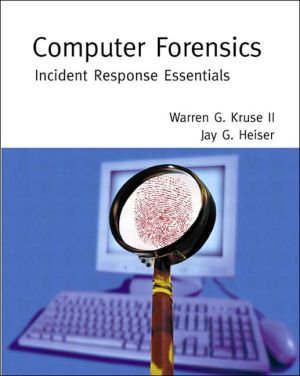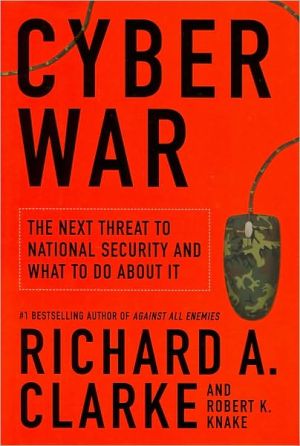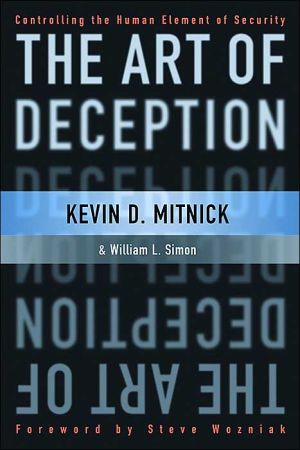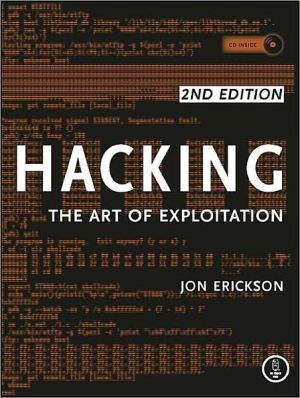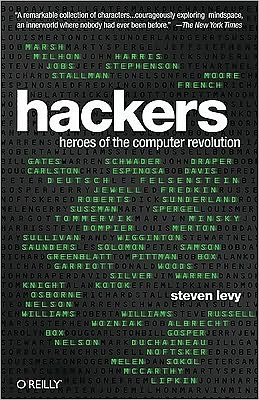Computer Forensics: Incident Response Essentials
"Computer Forensics, Incident Response Essentials is a phenomenal introduction to the tools and techniques for computer forensic response. The book listed a number of tools that I had never heard of before. I can't wait to download several of these and take them for a spin."\ —Stephen Northcutt, The SANS Institute\ Every computer crime leaves tracks—you just have to know where to find them. This book shows you how to collect and analyze the digital evidence left behind in a digital crime...
Search in google:
Just as regular police forensics focus on the information available at a crime scene, computer forensics looks at evidence that can be gleaned in the aftermath of a computer security incident. Two computer security professionals provide a methodology for collecting information that can lead to a perpetrator and prove useful in prosecutions. Chapters cover encryption, data hiding, hostile code, and introductions to forensics on Windows and Unix operating systems. Annotation c. Book News, Inc., Portland, OR (booknews.com)
Chapter: 2 Tracking an Offender\ In this age of pervasive connectivity, it is unrealistic to expect cyber crime incidents to be isolated to a single system. Like characters in a William Gibson novel, cyber sleuths often have to track offenders across the digital matrix. While the techniques of network forensics are still largely undeveloped, it would be a disservice to devote an entire book to computer forensics without any discussion of Internet methods that you can use to find leads to suspect computers.\ When tracking cyber offenders across the Internet, you use many of the same software tools that system and network administrators use to monitor and test network connectivity. Many of these programs are included in modern operating systems, and you may already be familiar with them. Even if you are already comfortable with the tools we discuss in this chapter, you may not have considered their use during an investigation. Unfortunately, many of our most common Internet application protocols make no provisions for strongly authenticating the transmitter of a communication. Services like email and Usenet are based on simple textbased initiation protocols and basically use the honor system. This complicates investigations because you cannot necessarily trust the identification information contained within Internet messages. The better you understand the underlying protocols and processes, the better you can evaluate the validity of the names and Internet addresses associated with Internet communications.\ Internet Fundamentals\ This book is intended to be an introduction to computer investigations, not to TCP/IP. If you want to be an effective network tracker, you need a thorough understanding of the Internet protocol suite. Many books are available on this subject. W. Richard Stevens' three-volume set, TCP/IP Illustrated, published by Addison-Wesley (1993, 1995, 1996), is considered one of the definitive references. The more comprehensive and detailed your understanding of Internet technology, the greater your skill at investigating network-enabled crime.\ The Internet and many private networks run a set of protocols commonly referred to as TCP/IP, which stands for Transmission Control Protocol/ Internet Protocol. The label "TCP/IP" is a convenient abbreviation for a set of related network protocols, the development of which effectively started in the late 1960s and is ongoing today. More precisely referred to as "the Internet protocol suite," it is a set of communication conventions that a device must implement in order to participate on the Internet. TCP/IP is not specific to any operating system, programming language, or network hardware. It is an equal opportunity set of standards that enables Macs, Windows, Unix, routers, switches, and a variety of mainframe environments to communicate with each other. It is not specific to network topology, meaning that Ethernet, token ring, and wireless networks can also interoperate. This universal interoperability is a prerequisite to both modern computer crime and investigations.\ Plenty of books and essays exhaustively discuss the Open Systems Interconnection (OSI) seven-layer Network Reference model, so we won't spend a great deal of time on it. The model is illustrated in Figure 2-1. The original seven-layer model was conceived as an abstraction that didn't apply to any currently existing technology— especially not the burgeoning suite of Internet protocols—and the exact labeling of Internet services and protocols within this model continues to be a matter of tremendous debate (especially the session and presentation layers). But it is a debate of no consequence because after all, the Internet still functions whatever abstract labels are assigned to its protocols. The important lesson to learn from this model is that certain infrastructural services provide the foundation for the actual file sharing and distributed applications that are the reason the network exists in the first place. These services are stacked on top of each other like Lego building blocks. Its relevance to forensic investigations is that you cannot interpret evidence without understanding its place within the hierarchy of stacked services. Let's look at a concrete example to see how this layering works.\ You might not have realized that when you send and receive email, you are dealing with three different addresses, each within a different network layer. Every network interface has a unique hardware address burned into it at the factory. This address is called the MAC (media access control) address. (We discuss an unusual use Microsoft makes of this address in Chapter 8.) This address enables all of the devices on a LAN segment—those devices that can see each other's network traffic— to refer to each other. At the network layer, devices recognize traffic intended for themselves on the basis of the MAC addresses incorporated within the chunks of data on the network, which are called packets. It is entirely impractical for every device on the Internet to refer to devices outside of their LAN segment by this hardware address, so when a computer joins the Internet, it has a numeric IP address assigned to it. An IP address is usually written as a series of four numbers in the range 0–255, separated by dots, such as 192.168.0.55.\ Certain IP addresses, or ranges of addresses, are reserved for special purposes. For example, IP addresses that end with 0 denote a network address, such as 192.168.0.0. An IP address that ends with 255 denotes a broadcast address, such as 192.168.0.255. "Private addresses" in the 192.168.0.0 to 192.168.255.255 range may be used on internal networks. These addresses "are intended for intra-enterprise communications, without any intention to ever directly connect to other enterprises or the Internet itself."1 When tracking offenders, if you locate an address within this range, don't pack your bags for California (the location of the Internet Assigned Numbers Authority2 ); you have to determine the suspects' external IP address to locate them.\ An Internet address actually contains two parts. The network portion is unique among all the networks interconnected to the LAN segment (which often means the entire Internet), and the host section is unique among all the devices using the same network portion. The effect is that all IP addresses on the Internet are both unique and identifiable as being within a specific network. Private networks use addressing that is unique within their networks, but any two private networks can use the same "address space" as long as they are not interconnected to each other.\ The uniqueness of addresses and the distinction between network and host portions of the address make it practical for routers to know where to route to. Entire books have been written about routing. For our simplified purposes, routers are devices that automatically forward your data packets to another network when the destination is not your network. Routers base their decision on where to forward your packet on current conditions and their programmed instructions—routers do whatever is most expedient, which means that the route between any two points can change. This is completely different from the Public Switched Telephone Network (PSTN). When you make a telephone call, the switches within the PSTN sequentially establish a circuit from end to end, and it is maintained throughout the duration of the call. On the Internet, it may often seem as if you are using a circuit, but the actual path taken by each individual packet is dependent upon the whims of the intermediate routers.\ The network part of an Internet address is assigned by the Internet Assigned Numbers Authority (IANA) to each network owner, and the host part is assigned to individual hosts and devices by the network owner. The network may be run by an organization (business or government agency), or it may be run by an Internet service provider (ISP) to provide Internet access to its customers. In the latter case, the IP addresses may be used by individuals or multiple organizations. Because IP addresses are used for routing, when a device is moved to a new network, it often requires a new address.\ IP address can be statically or dynamically assigned. Computers that are assigned a static IP address always use the same IP address until it is manually changed to a new address, which is becoming increasingly less convenient in a time of constant reorganizations and mobile computers. Dynamic addresses are automatically assigned to a computer when it registers itself on a network using a protocol called Dynamic Host Configuration Protocol (DHCP) or Windows Internet Naming Service (WINS), a Microsoft protocol that is rapidly becoming obsolete. For network administrators, DHCP neatly solves the tedium and confusion of manually assigning constantly moving Internet devices. Virtually all ISPs use DHCP to assign addresses to their dial-up customers, and many permanently connected home users have dynamically assigned addresses that can change whenever their cable modems are powered off and on. Use of DHCP is definitely on the increase, but unfortunately, DHCP makes detective work a little more difficult....\ \ 1. From RFC 1918. (For more information on private addresses, see http://www.isi.edu/in-notes/rfc1918.txt.)\ 2. http://www.iana.org\
PrefaceviiAcknowledgmentsxiiiChapter 1Introduction to Computer Forensics1Chapter 2Tracking an Offender23Chapter 3The Basics of Hard Drives and Storage Media65Chapter 4Encryption and Forensics83Chapter 5Data Hiding105Chapter 6Hostile Code129Chapter 7Your Electronic Toolkit149Chapter 8Investigating Windows Computers177Chapter 9Introduction to Unix for Forensic Examiners207Chapter 10Compromising a Unix Host245Chapter 11Investigating a Unix Host263Chapter 12Introduction to the Criminal Justice System311Chapter 13Conclusion325Appendix AInternet Data Center Response Plan327Appendix BIncident Response Triage Questionnaire353Appendix CHow to Become a Unix Guru363Appendix DExporting a Windows 2000 Personal Certificate367Appendix EHow to Crowbar Unix Hosts375Appendix FCreating a Linux Boot CD377Appendix GContents of a Forensic CD379Annotated Bibliography381Index385
